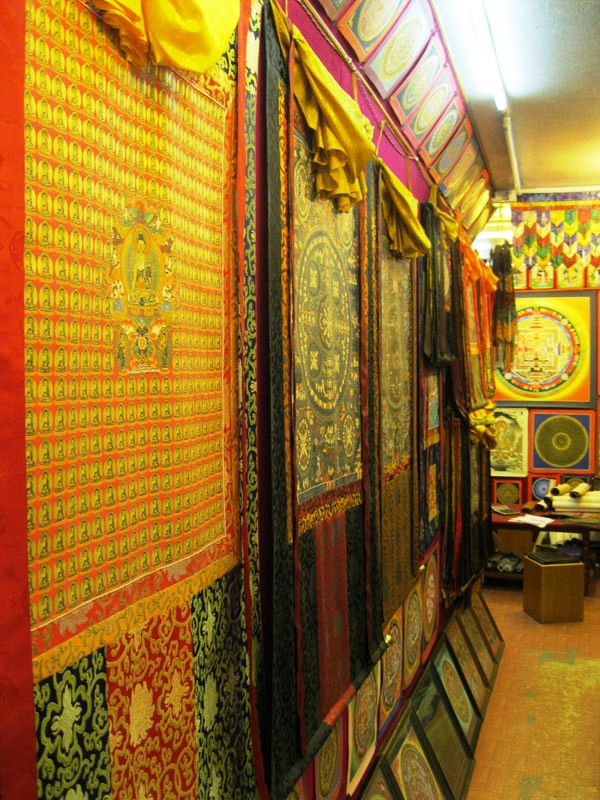Categories

Thangka
The Thangka painting tradition is characterized by a unique style that is very peculiar and truly fascinating. Behind each image of Buddhas, Bodhisattvas, Gods and Goddesses, terrifying Dharmapalas, mythological animals, Gurus and intricate Mandalas there is a profound meaning.
Thangka paintings are still considered very important for studying and preserving the religion, history, culture and traditions of all Himalaya area of Tibet, India and Nepal.
The origin of these elaborated designs is in traditional Tibetan Buddhist meditation rituals and practices that Lamas and monks use to perform and teach. The visions of former Dalai Lamas, enlightened teachers, Dakinis and monks are expressed into the images of mandala, symbols and important figures of Buddhist and Hindu pantheon.
Historically these artworks were commissioned for both spiritual and mundane matters, for instance to help a sick person, to remove spiritual or material obstacles, to gain merit during commemoration of religious events or as a gift for a new temple or shrine.
This amazing art, according to the scholars, started in the Kathamandu valley and spread all around the Himalayan region especially in Tibet, Bhutan, North of India and influenced sacred art in South-East Asia, China and even Japan. Thangka painting art survived for centuries thanks to the patient and attentive work of families of different casts and different beliefs that carried on the passion of reproducing sacred images that we believe have truly important powers, and meanings that belong to all humanity.
